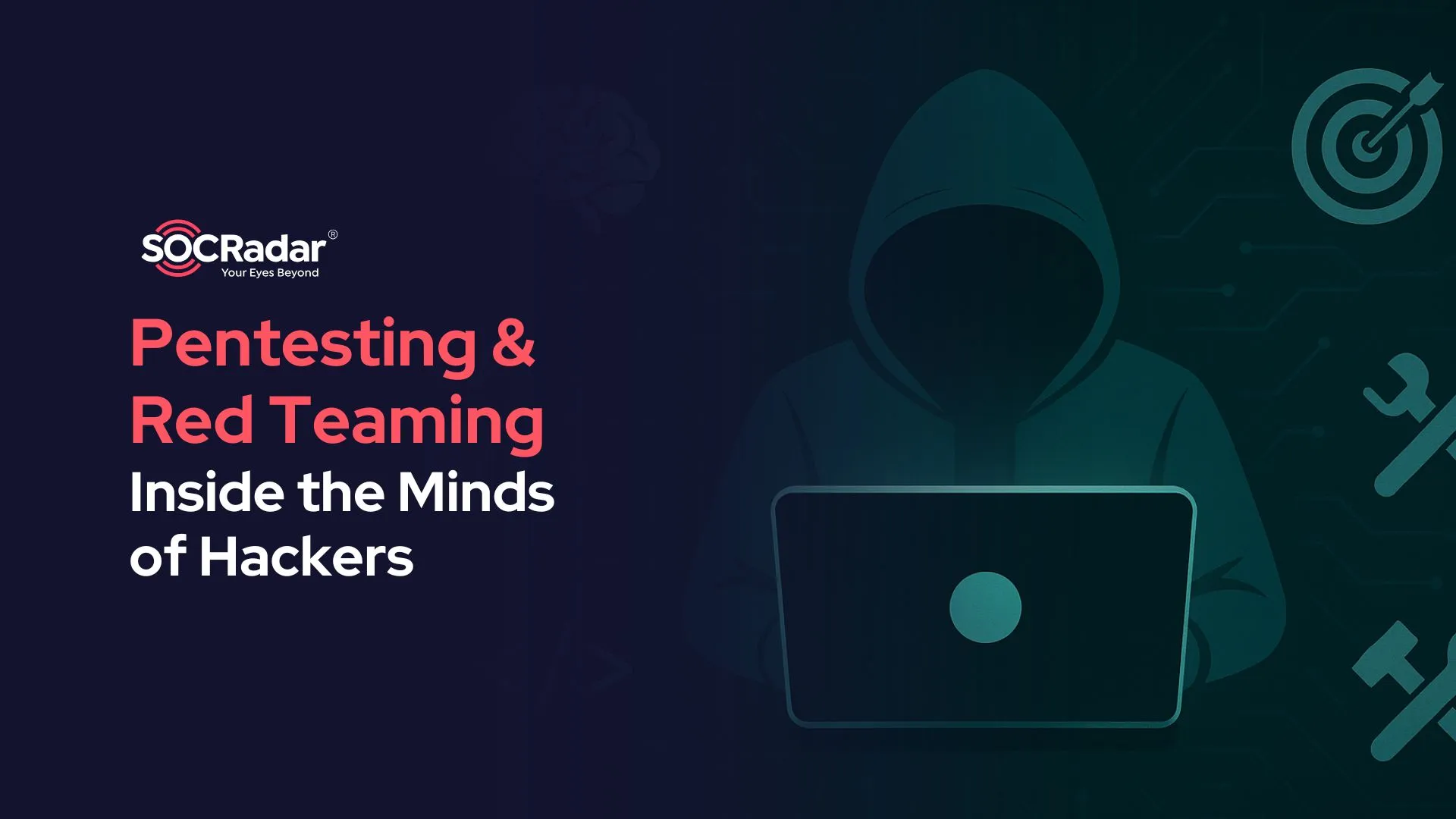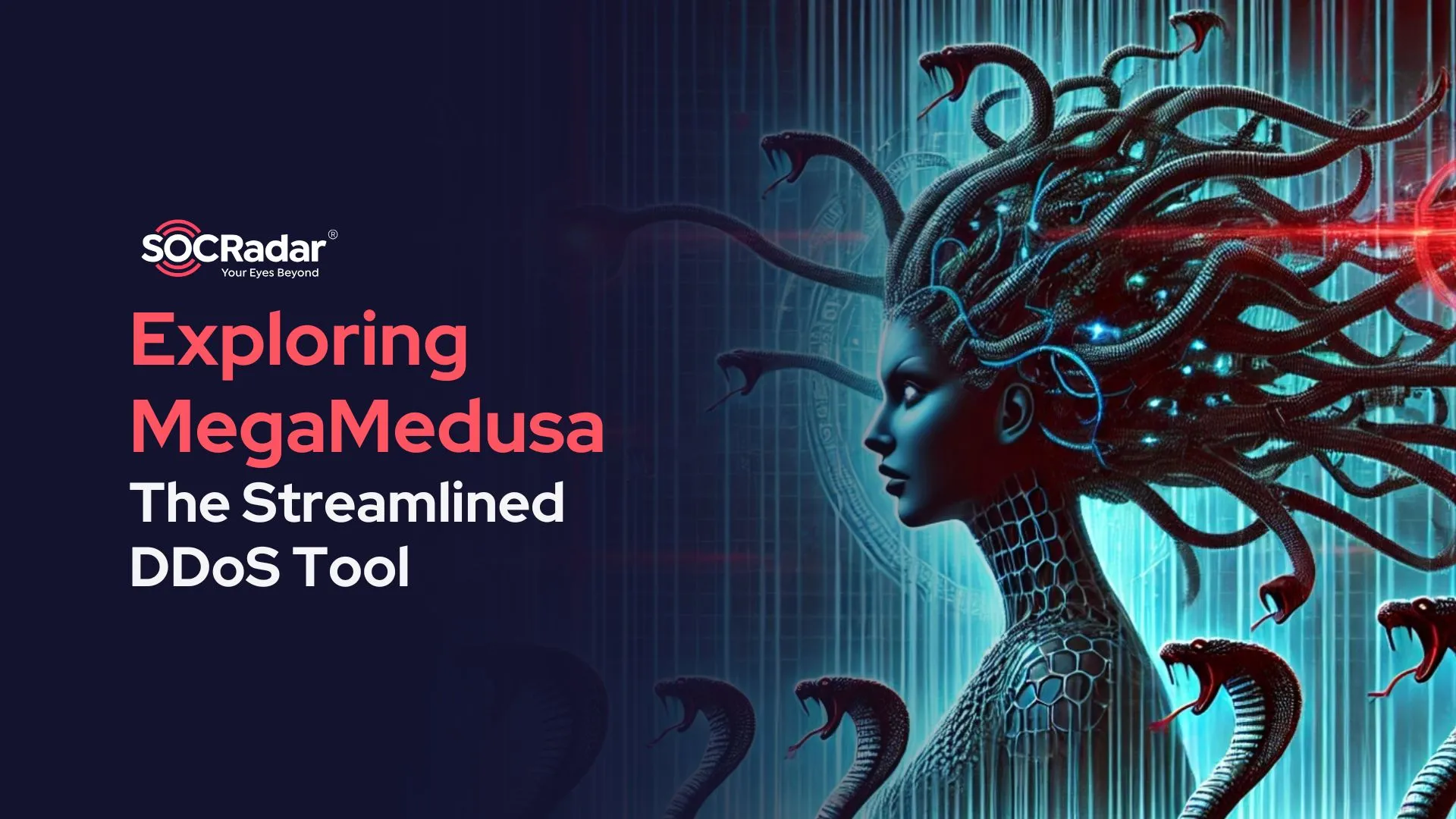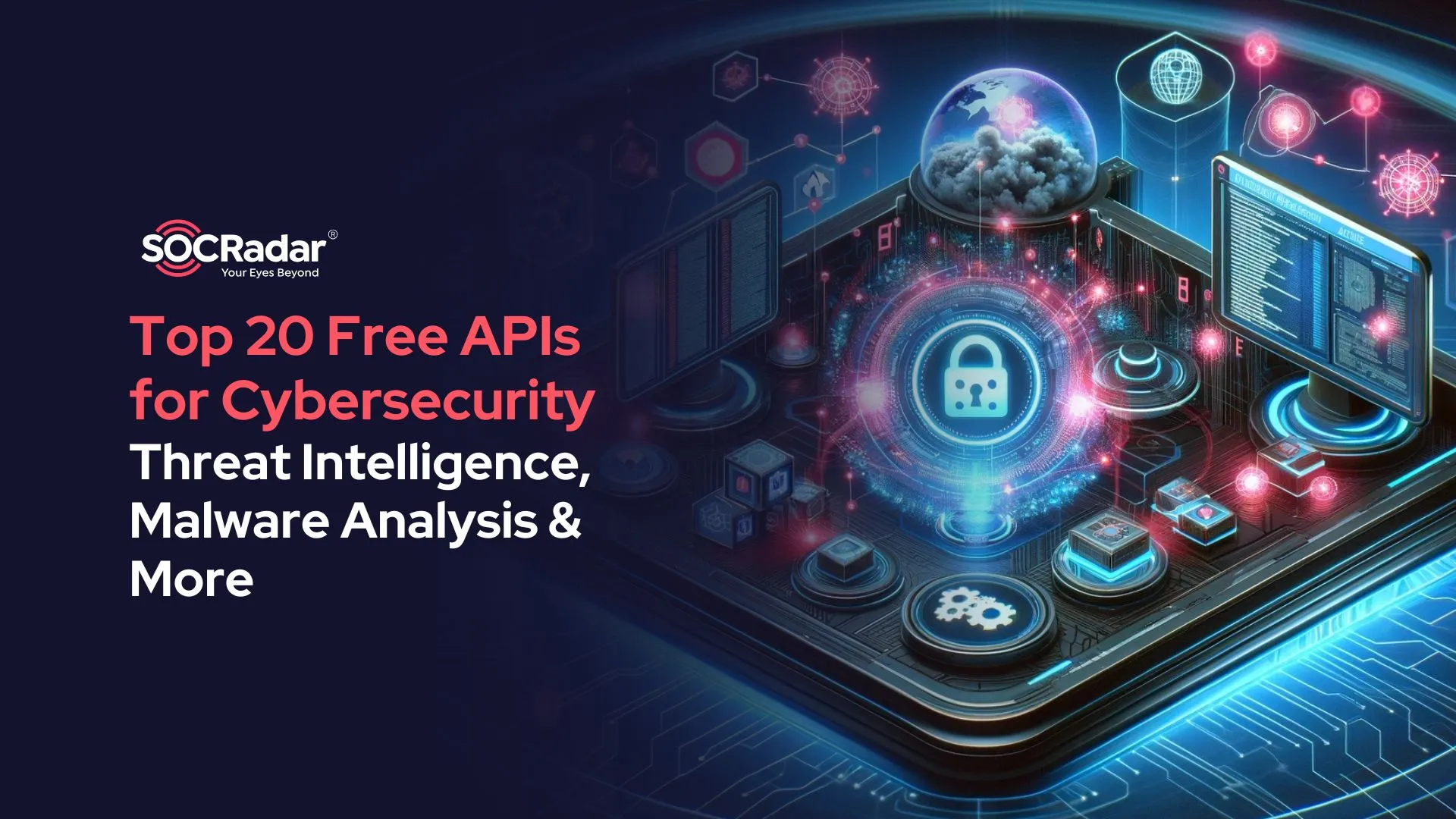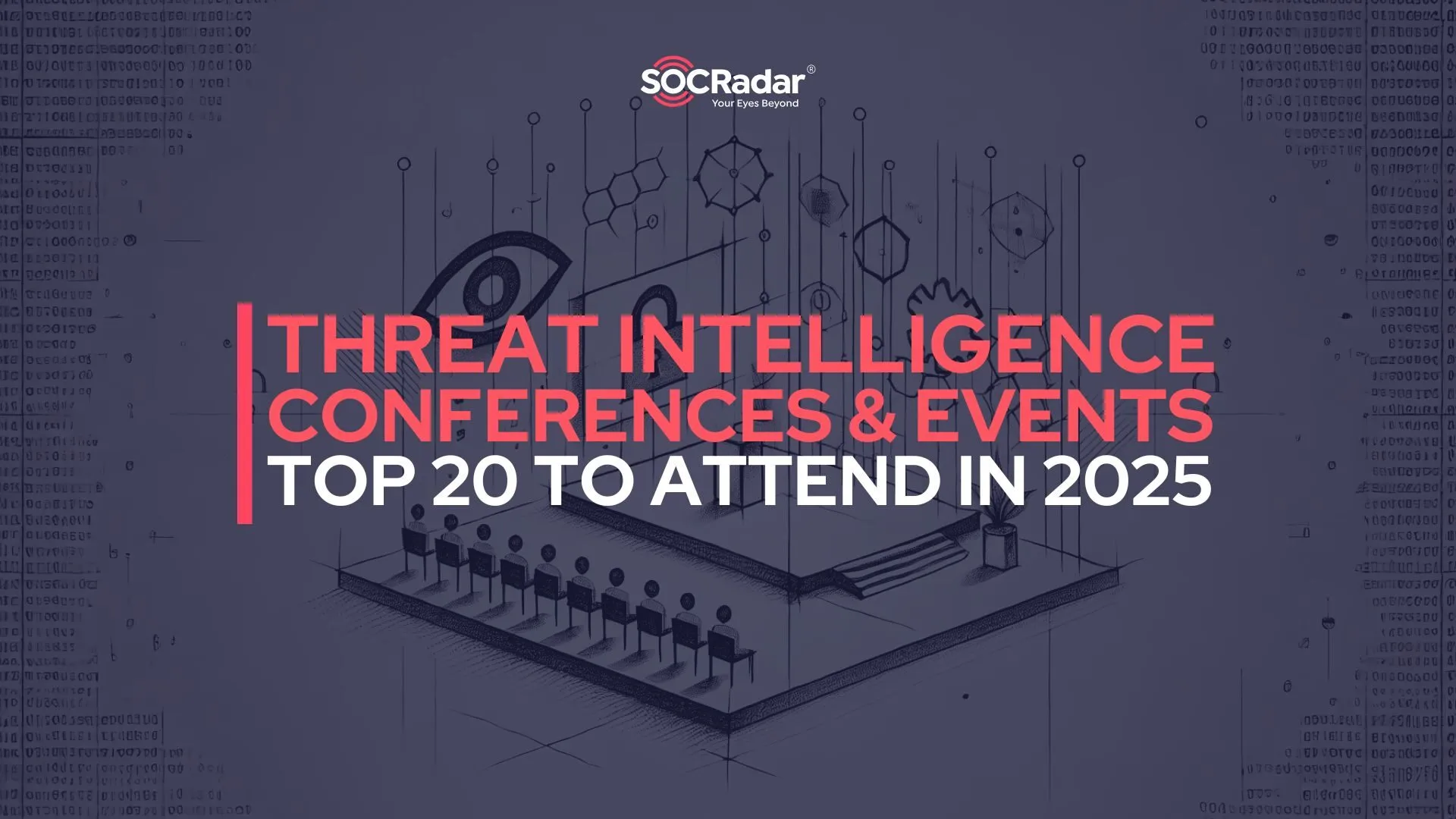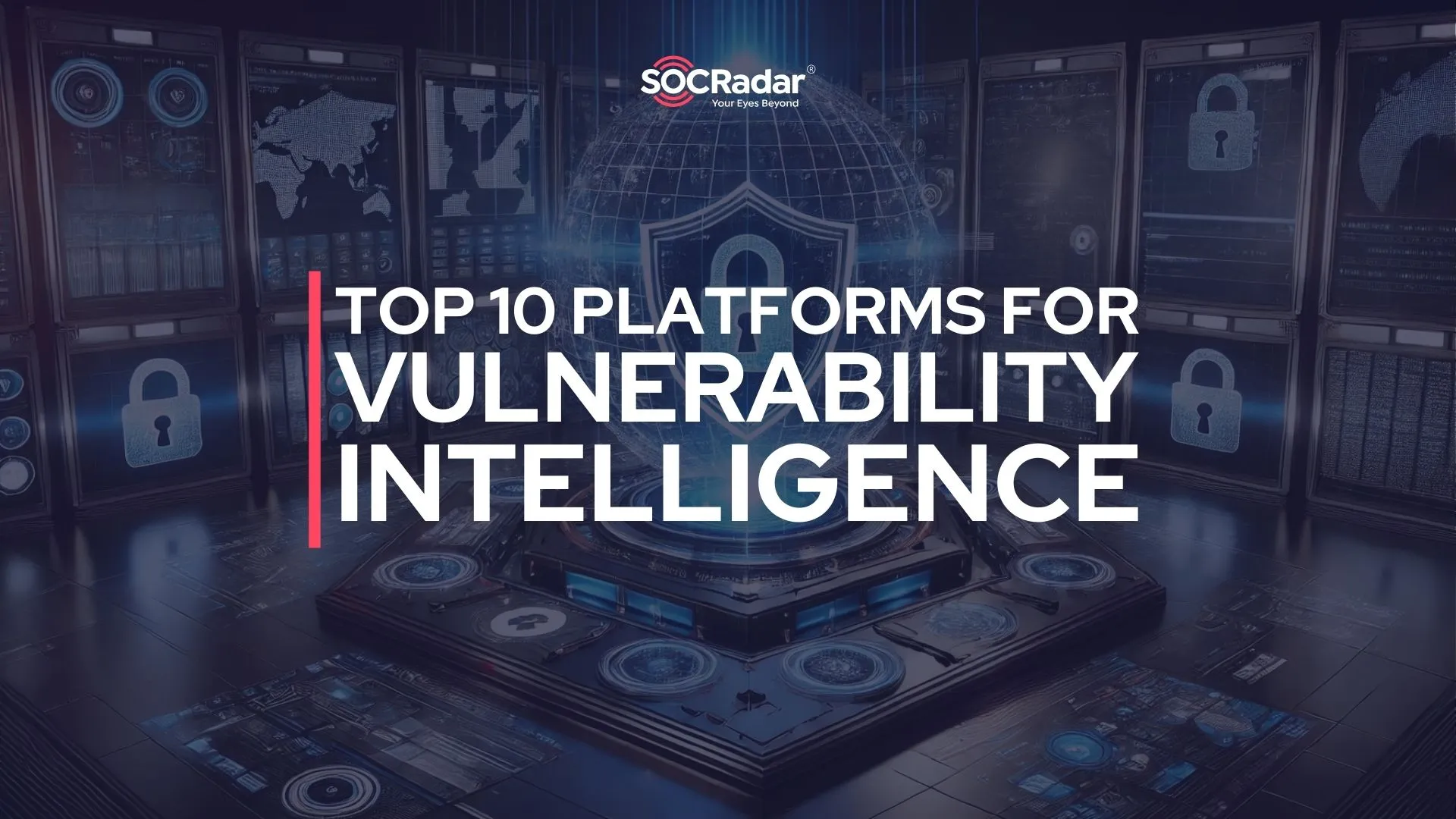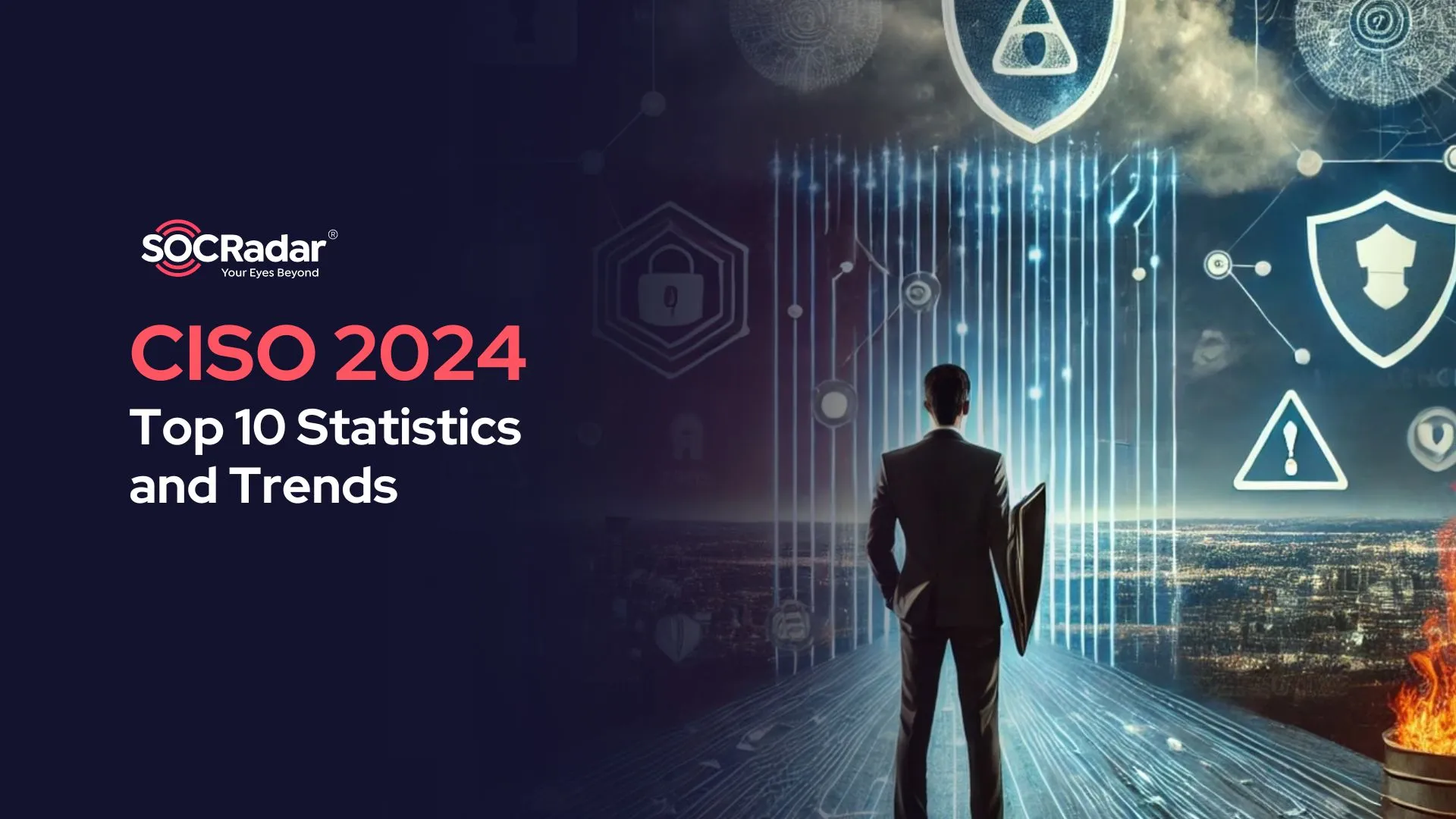
Top 10 CISO Statistics and Trends in Cybersecurity for 2024
The role of the Chief Information Security Officer (CISO) is increasingly challenging. Once viewed as technical experts focused on day-to-day operations, CISOs have evolved into key strategic leaders, tasked with navigating a relentless surge in cyber threats.
In today’s world, CISOs must defend against sophisticated ransomware attacks, manage limited budgets, and address the human element of cybersecurity, all while keeping pace with emerging technologies, such as AI, which can be both a blessing and a threat.
As digital transformation accelerates across industries, CISOs are under growing pressure to protect their organizations’ networks while also ensuring compliance with regulations and promoting security awareness across all levels. Their role has expanded from managing traditional security defenses to addressing both technical vulnerabilities and human risks.

CISO defending against modern threats (An AI illustration by DALL-E)
In this article, we’ll explore the top concerns and priorities of Chief Information Security Officers today, providing insights into the immense responsibility they shoulder in safeguarding their organizations, supported by key statistics.
1. The Rise of the CISO From Functional Leader to Strategic Powerhouse
The role of the Chief Information Security Officer has become indispensable in modern enterprises. Once primarily focused on day-to-day security operations, the CISO has now evolved into a strategic leader with responsibilities that span critical areas such as strategic planning, cybersecurity policy, and regulatory compliance.
As cyber threats have grown more complex, CISOs are now tasked with not only safeguarding systems but also managing budgets, ensuring compliance with data privacy laws, and leading incident response efforts. They also foster a culture of security awareness across the organization and often report directly to the CEO or board of directors to align business and security goals.
This shift is underscored by a surge in CISO adoption, with all large corporations having a CISO by 2021, up from just 50% in 2010. In 2023, at least 32,000 CISOs were employed globally, as estimated by Cybersecurity Ventures.
2. Budget Pressures and Talent Shortage
Chief Information Security Officers (CISOs) face immense pressure to secure their organizations, yet many find themselves constrained by limited budgets and staffing shortages. With cyber threats becoming more sophisticated and frequent, it’s critical that they have the resources to defend against attacks. However, 80% of CISOs report that they do not have sufficient funding to implement robust cybersecurity measures, according to Forbes. This underfunding forces them to make tough decisions on which defenses and tools to prioritize, often leaving critical vulnerabilities exposed.
Compounding this issue is the global cybersecurity skills gap, which makes it difficult to build and retain skilled teams. The (ISC)² Cybersecurity Workforce Study highlights that there is a shortfall of 3.12 million cybersecurity professionals worldwide. This gap increases the burden on CISOs, who must work with limited personnel while trying to protect their organizations from constant cyber threats.
As a result, the tenure of a CISO averages only 26 months, significantly lower than other C-suite roles. The high turnover reflects the stress and demands of a role that is stretched too thin by financial and talent constraints.
3. Top Cybersecurity Threats in 2024, According to CISOs
Ransomware and malware have emerged as the top threats keeping CISOs on high alert.
According to a February 2024 survey, 41% of CISOs worldwide identified ransomware as the most significant threat to their organizations, closely followed by 38% naming malware. These threats have now overtaken Business Email Compromise (BEC), which had previously been the primary concern for many CISOs but now ranks third at 36%.
This highlights the increasing sophistication of cyberattacks, particularly ransomware, which has grown into one of the most disruptive tactics for threat actors. Malware, with its ever-expanding variants, continues to pose a persistent threat to organizations across all sectors.
Despite the growing number of cyberattacks, there’s a notable increase in CISO confidence. ProofPoint states that although 70% still feel at risk of a material cyber attack within the next 12 months, only 43% believe their organizations are unprepared for such an attack. This is a significant improvement from 61% in 2023, indicating that many organizations have made strides in shoring up their defenses.
While ransomware and malware have overtaken BEC in terms of concern, BEC still presents a significant risk to organizations. To combat the growing threat of Business Email Compromise attacks, SOCRadar’s Digital Risk Protection module helps monitor for signs of email fraud, phishing attempts, and domain spoofing.
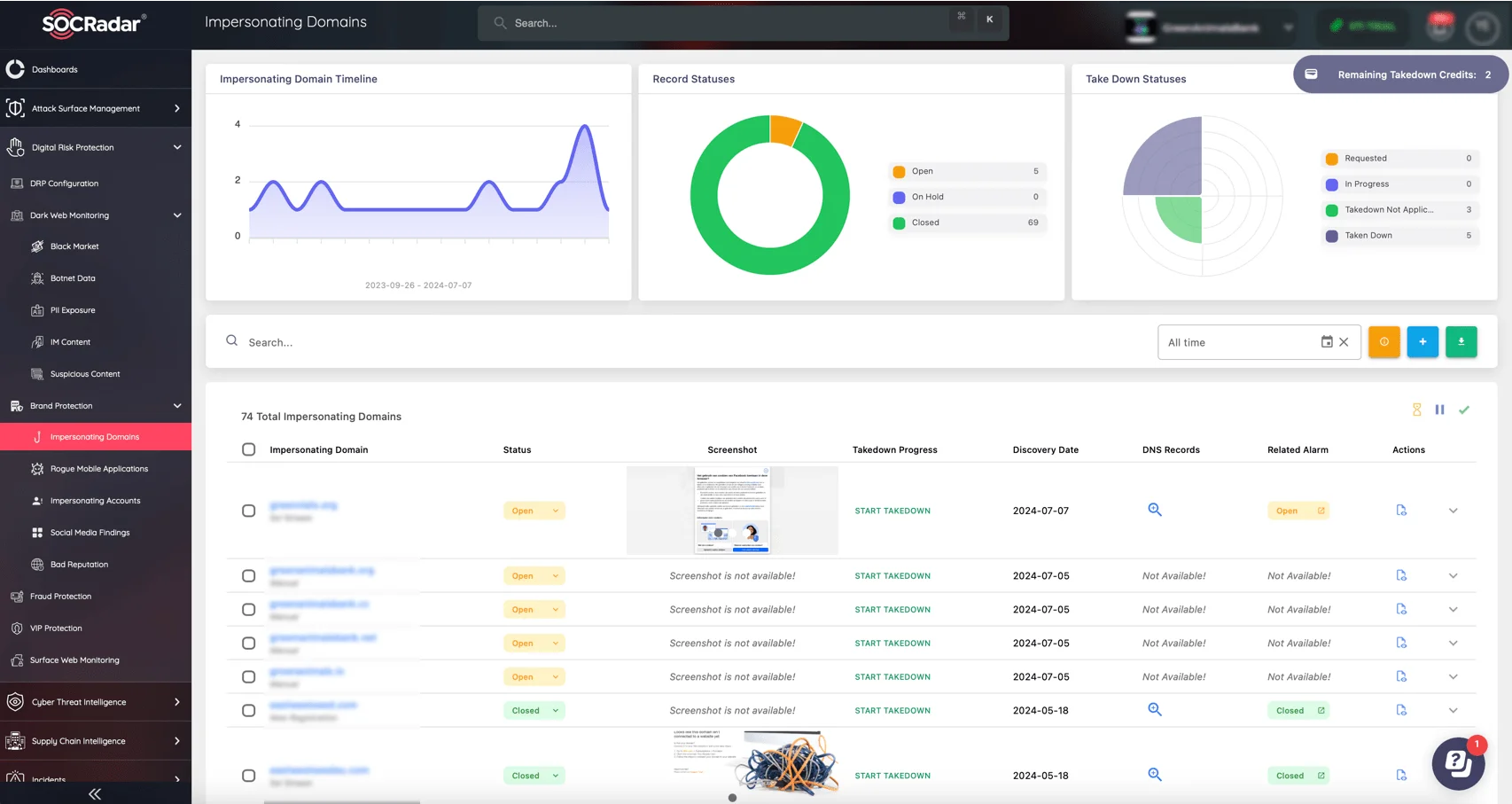
SOCRadar’s Digital Risk Protection, Brand Protection
By providing early warnings of suspicious activities targeting your organization’s communication channels, SOCRadar enables your security team to take swift action to mitigate potential breaches.
4. CISOs Preparing for Future Threats
To navigate the rapidly evolving threat landscape, CISOs are focusing on future investments that will enhance their organizations’ defenses. Many are prioritizing new technologies, employee training programs, and compliance tools to ensure they stay ahead of both current and future threats.
Among the most promising areas for investment are emerging technologies like artificial intelligence (AI), machine learning, and blockchain. These technologies offer potential for automation, enhanced threat detection, and predictive capabilities. However, budget constraints often limit the ability to fully implement these innovations, despite their potential to revolutionize cybersecurity.
A Chief Information Security Officer must also balance these new technologies with existing infrastructure while managing increasingly complex cyber threats. The need to align financial resources with risk management strategies adds to the challenge.
While AI can be a valuable tool for defense, there are also concerns about the risks it poses in adversarial hands. A recent survey shows that 46% of cybersecurity leaders worry about generative AI advancing phishing, malware, and deepfake capabilities. Additionally, 20% of respondents are concerned about data leaks via generative AI systems.
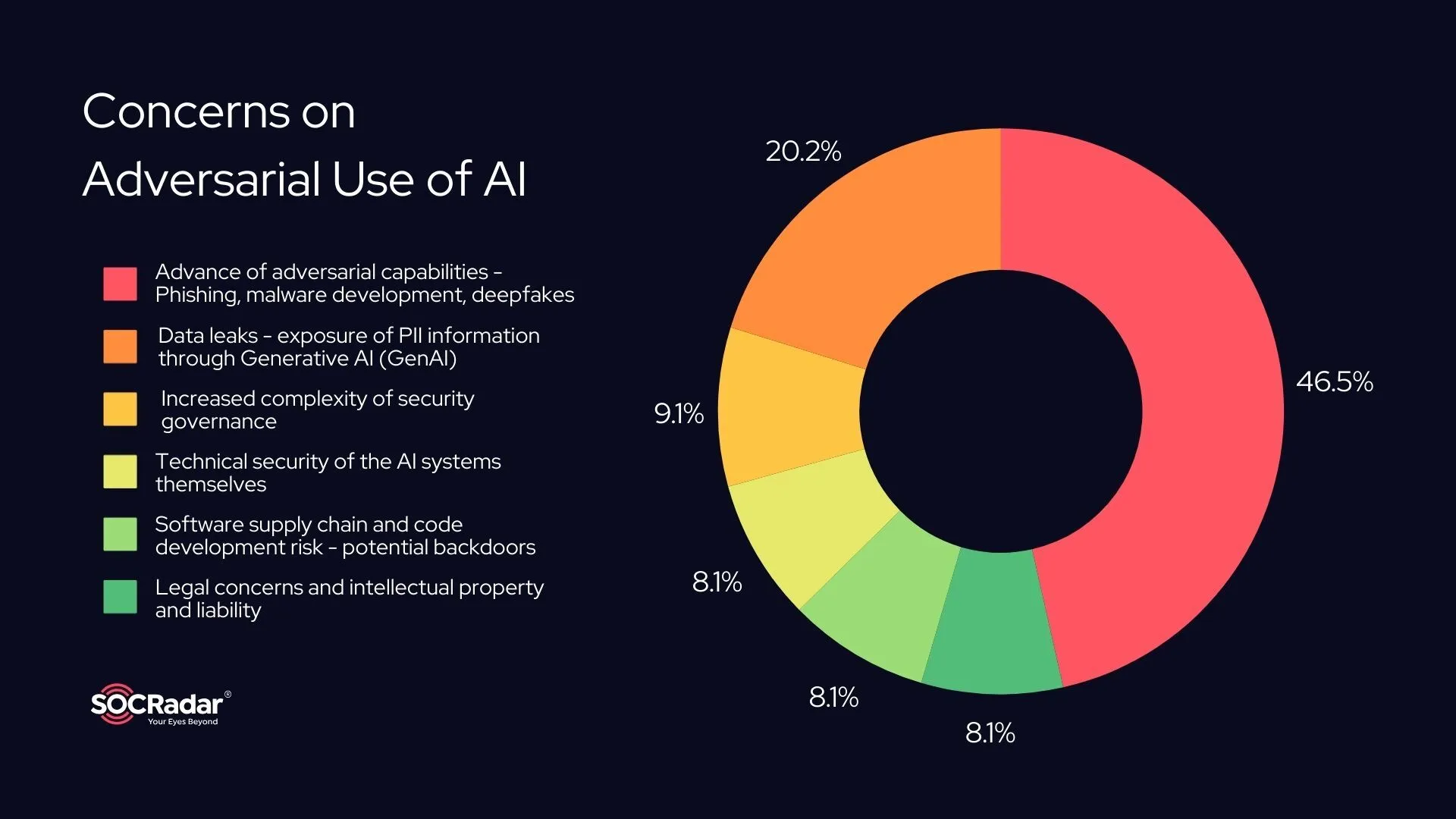
Cybersecurity leaders’ concerns about the adversarial use of AI
5. CISOs State Human Error Remains the Top Cyber Vulnerability
Despite advancements in technology, human error remains the top vulnerability for organizations. In 2024, 66% of CISOs in the U.S. identified human error as the biggest risk. This highlights the ongoing challenge of managing human-related risks, even as 86% of CISOs now believe employees understand their role in protecting the organization.
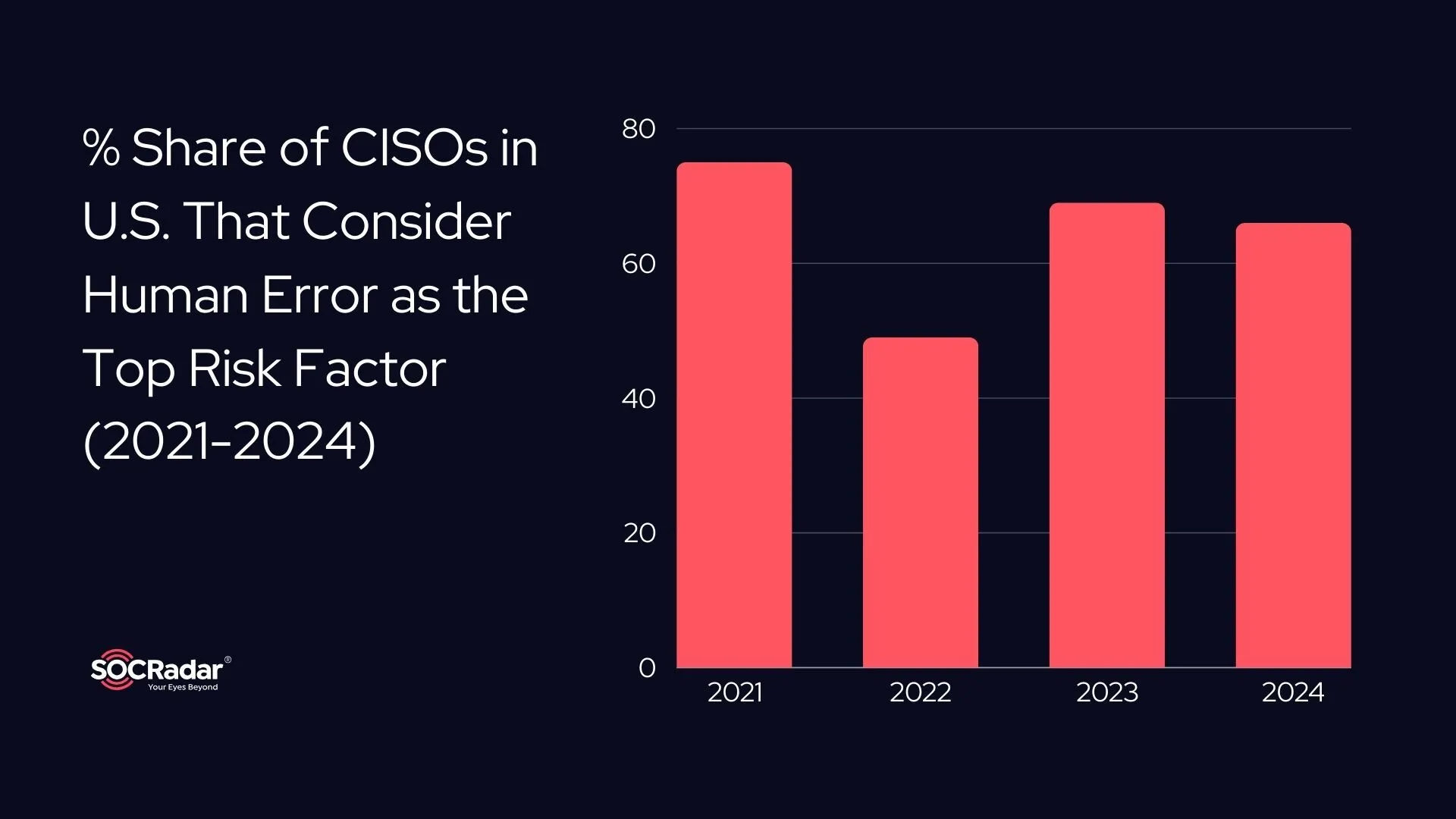
CISOs that consider human error as the biggest cyber risk factor over the years 2021-2024
While confidence in employee awareness has grown, the gap between perceived risk and preparedness remains. Insider threats, both accidental and malicious, further complicate security efforts, with employees inadvertently leaking or, in rare cases, deliberately misusing sensitive data.
Further emphasizing the threat, a 2024 CISO survey by Metomic revealed that 40% of the 6.5 million Google Drives scanned contained sensitive data. Such occurrences, stemming from poor data management practices, might lead to potential data breaches.
Given the persistent threat posed by human error, SOCRadar’s Digital Risk Protection module helps organizations monitor for potential leaks across digital channels, minimizing the risk of unintentional or malicious data exposure.
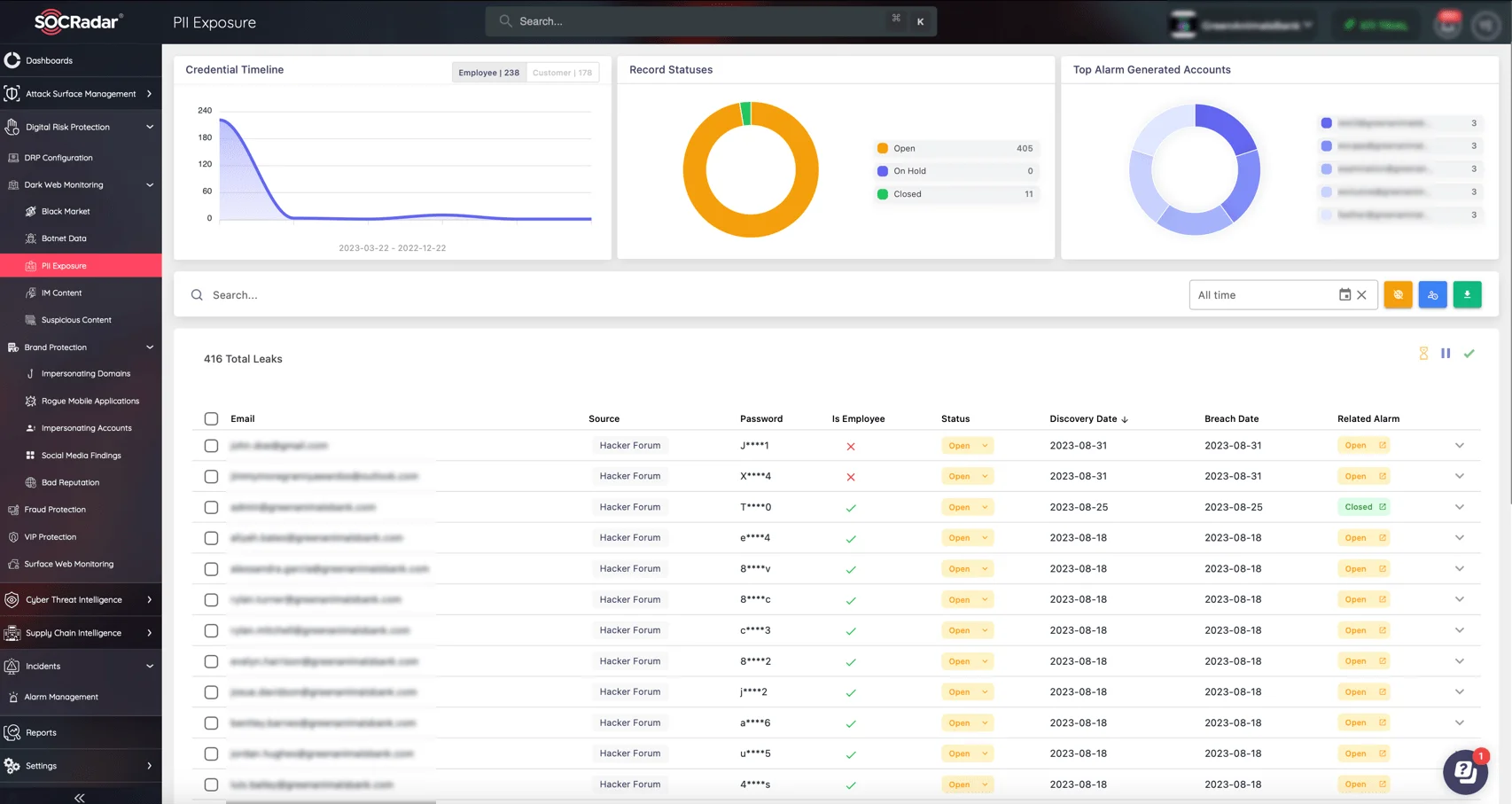
Monitor PII Exposure and more via SOCRadar’s Digital Risk Protection
6. Board-CISO Alignment on Cybersecurity Improves
As cyber threats become more complex and frequent, effective communication between security teams and the board is vital.
In 2024, 84% of CISOs reported that their board members are now aligned with them on cybersecurity issues, a significant increase from 62% in 2023. This reflects a deeper understanding of the importance of cybersecurity at the leadership level.
This improved alignment allows for better decision-making, ensuring that cybersecurity priorities are recognized and adequately funded. It also highlights the evolving role of CISOs as strategic leaders, not only as technical experts, in safeguarding the organization from potential risks.
7. CISOs Grapple with Generative AI Concerns in 2024
As generative AI continues to transform both technology and business processes, it is reported that 54% of CISOs now identify it as a significant security risk, particularly through platforms like ChatGPT, collaboration tools such as Slack and Teams, and Microsoft 365.
Building upon our earlier discussions around the potential risks from AI, and human errors, let’s emphasize again: CISOs are increasingly worried about the adversarial use of generative AI, as well as its unintentional malicious use by employees. The risk of sensitive company data being used to train large language models (LLMs) is a top concern.
A 2024 survey revealed that 72% of U.S. CISOs are particularly worried that these solutions could lead to security breaches. In fact, CISOs in both the U.S. and UK continue to rank data breaches as their primary issue, with U.S. leaders placing AI and emerging technologies next on their list of threats.
8. The Growing Risk of SaaS Sprawl and Shadow SaaS
The adoption of SaaS (Software-as-a-Service) applications has exploded, introducing both efficiencies and risks for organizations.
According to a 2024 CISO survey by Metomic, 36% of U.S. CISOs report that their organizations are using over 200 SaaS applications, while 7% report managing over 500 apps. This growing reliance on SaaS tools increases the risk of data breaches, as each app presents a potential attack surface.

A significant number of CISOs report their organizations use +200 SaaS apps, widening the potential attack surface.
However, these numbers may only scratch the surface. Many organizations are likely underestimating the true extent of their SaaS usage due to Shadow SaaS – the use of unapproved or unsanctioned SaaS applications by employees. These hidden apps increase vulnerability to cyber threats, as they often lack the same oversight and security measures as officially sanctioned tools. Shadow SaaS can make it harder for security teams to maintain control and visibility over all the potential entry points for attackers.
For a deeper understanding of Shadow SaaS and how it impacts cybersecurity, read the SOCRadar blog post: What Is Shadow SaaS and How It Increases Vulnerability to SaaS Attacks.
To address the growing risks of unknown digital assets and hidden vulnerabilities, SOCRadar’s Attack Surface Management module offers continuous monitoring of your organization’s entire digital ecosystem. By providing real-time visibility into exposed components and weak points, it helps your security team to swiftly identify potential threats and ensure protection across all assets.
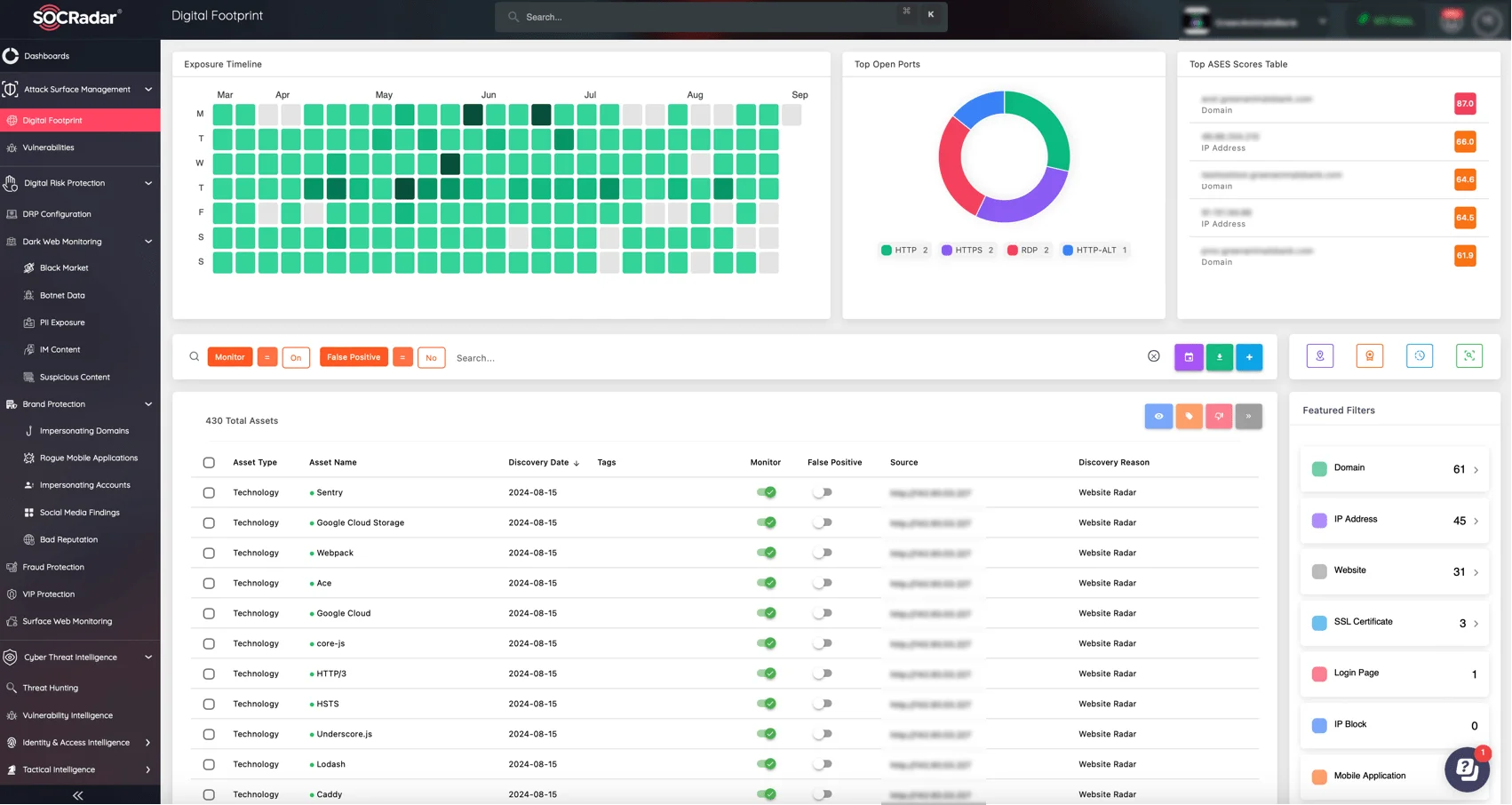
SOCRadar’s Attack Surface Management, Digital Footprint
9. Cybercrime’s Economic Impact and Rising Costs
Global cybercrime damages are projected to hit $9.5 trillion USD in 2024, positioning it as a massive economic force that would rival the world’s largest economies.
By 2025, these costs are expected to grow to $10.5 trillion USD, as forecasted by Cybersecurity Ventures, highlighting the immense financial strain cyber threats impose on businesses and governments alike. The rapid escalation in cybercrime not only risks disrupting innovation and investment but also causes financial losses greater than those from natural disasters, and exceeds the profits of major illegal drug trades.
Meanwhile, the average cost of a data breach reached a record high of $4.88 million USD in 2024, according to IBM’s Cost of a Data Breach Report 2024. This represents a significant increase of over 15% since 2020, reinforcing the critical role of CISOs in protecting organizations from these mounting threats.
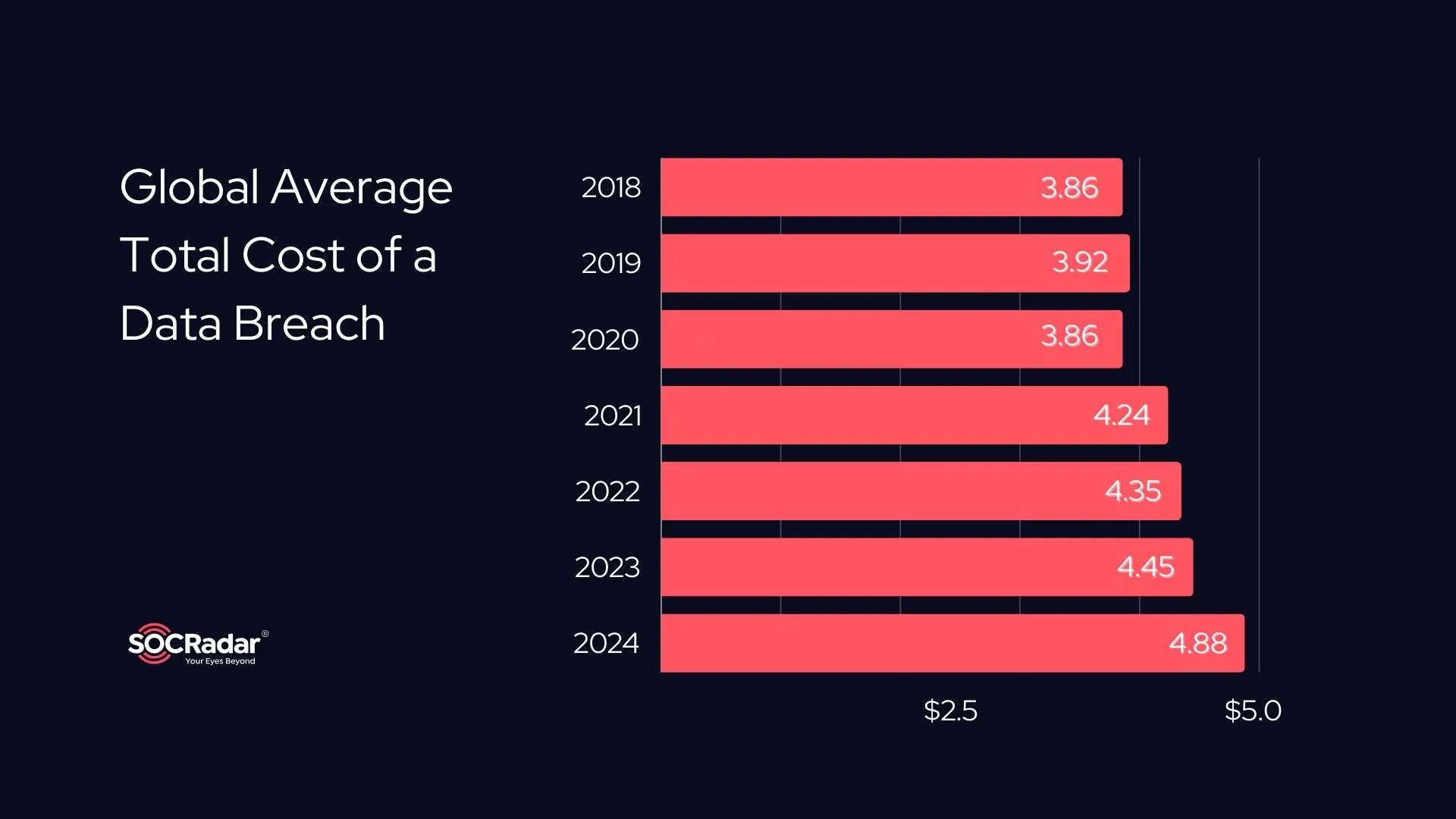
Global average total cost of a data breach over the years 2018-2024
As the financial toll of cybercrime continues to rise, security teams need every possible advantage to stay ahead of these evolving threats. SOCRadar’s Dark Web Monitoring provides real-time alerts on emerging threats from underground forums and hacker networks, like breaches and leaks, offering your security team an invaluable advantage in early threat detection.
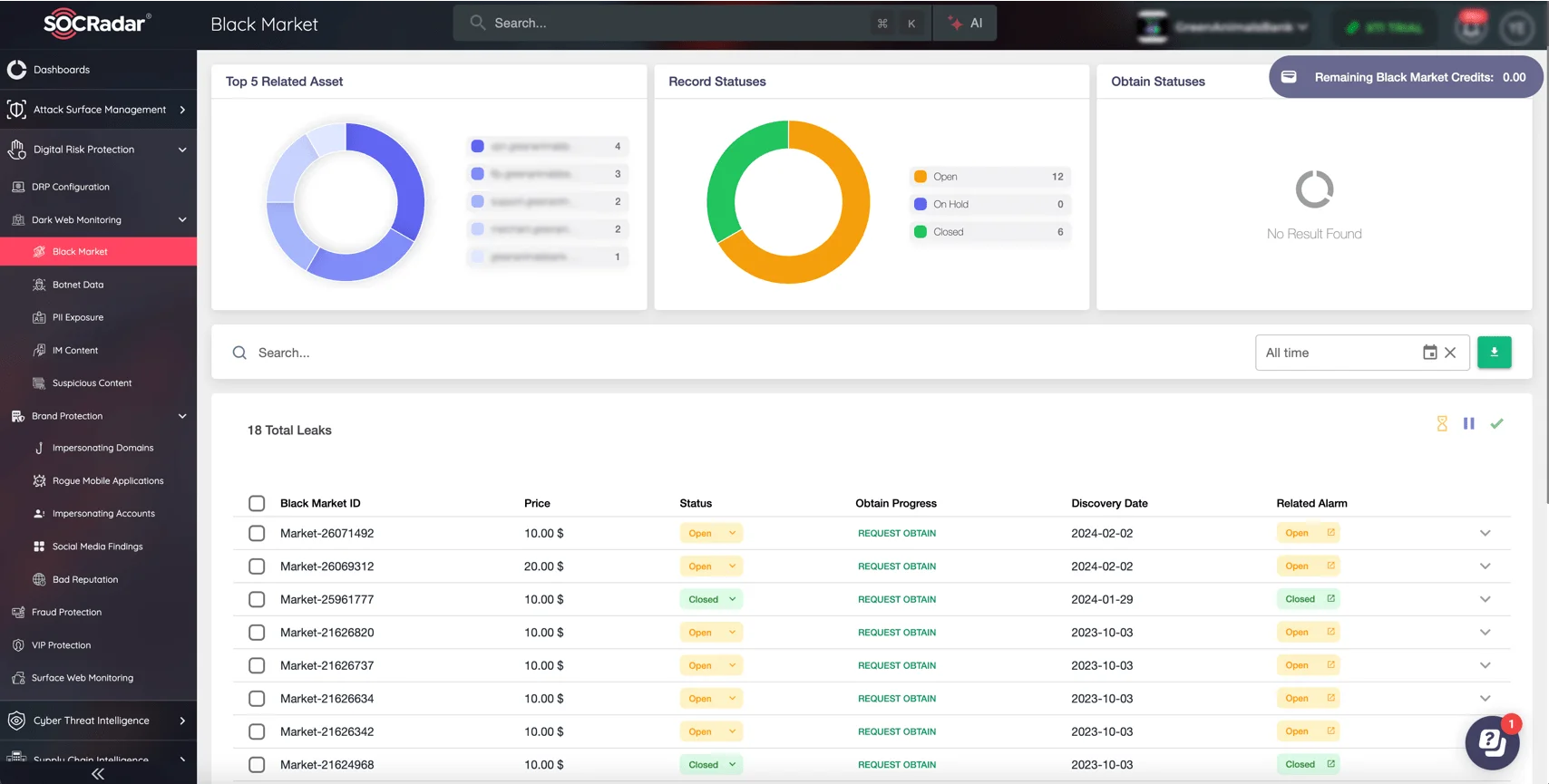
SOCRadar’s Dark Web Monitoring module
Additionally, the Threat Actor Intelligence module provides detailed insights into the tactics and operations of specific threat actors and malware, enabling more informed decision-making and targeted defensive strategies.
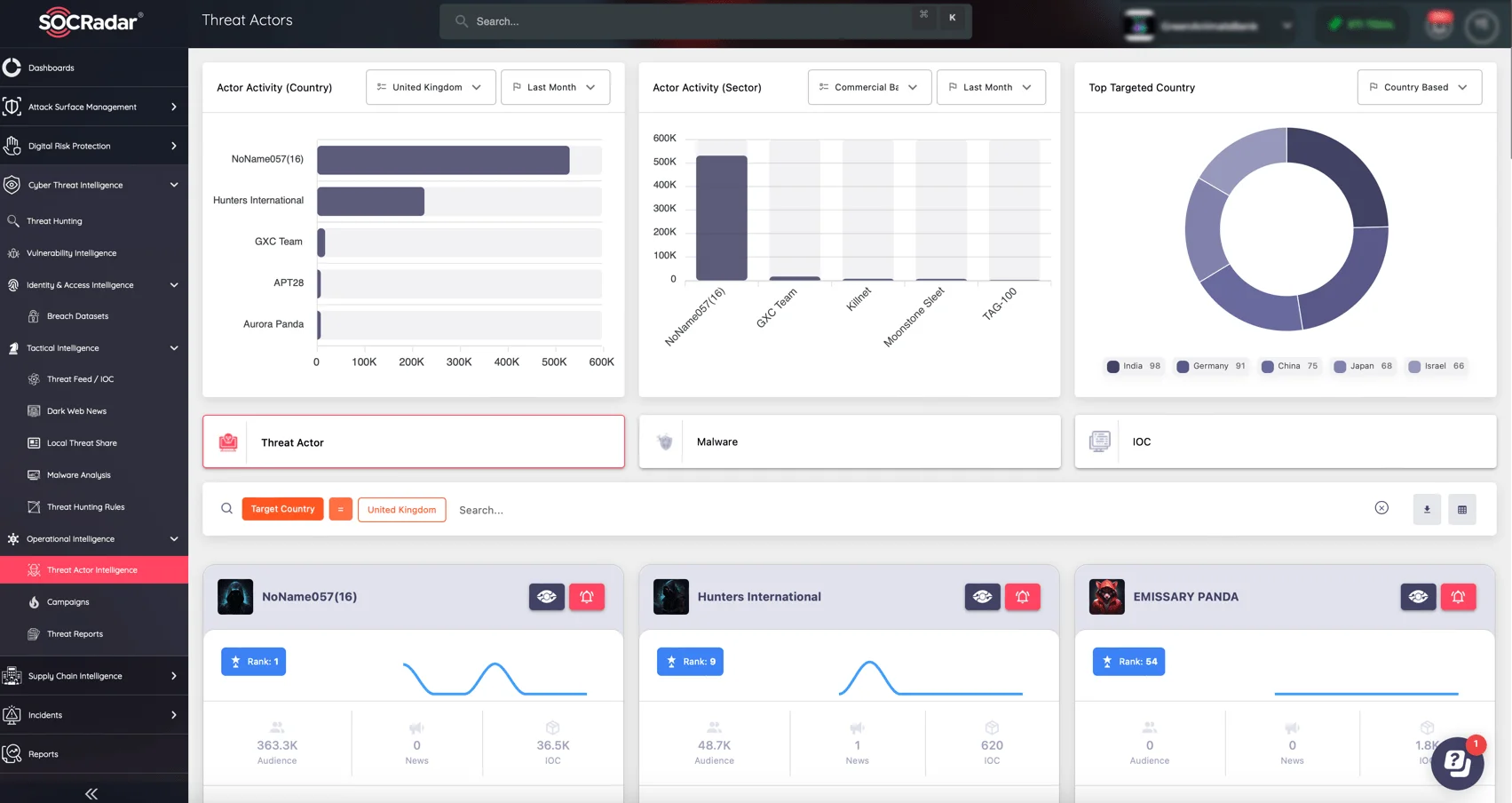
SOCRadar’s Threat Actor Intelligence module
10. CISOs Prioritizing Security Operations in 2024
As cyber threats grow more complex, CISOs are focusing on strengthening their defenses through a balanced approach.
In 2024, 84% of CISOs are prioritizing security operations as their primary focus, according to the 2024 Metomic CISO survey. Closely behind, 82% are concentrating on strategic planning to prepare for emerging risks, while 79% emphasize security awareness training to equip employees as a critical defense against threats.
This highlights a well-rounded approach where immediate threat response, long-term planning, and workforce education are all considered critical to strengthening an organization’s security posture.
Conclusion
How can CISOs effectively balance limited budgets, evolving technologies, and human vulnerabilities while keeping their defenses strong? With ransomware and malware identified as the top threats by 41% and 38% of CISOs respectively, it’s clear the threat landscape is only becoming more complex.
To effectively safeguard their organizations, they must invest in tools, training, and continuous learning; yet, without timely and actionable intelligence, even the most advanced defenses can fall short. This is where real-time threat intelligence becomes essential. The SOCRadar Extended Threat Intelligence (XTI) platform equips organizations with the insights needed to make informed decisions, anticipate threats, and neutralize attacks before they strike, ensuring a proactive and well-rounded approach to cybersecurity.































